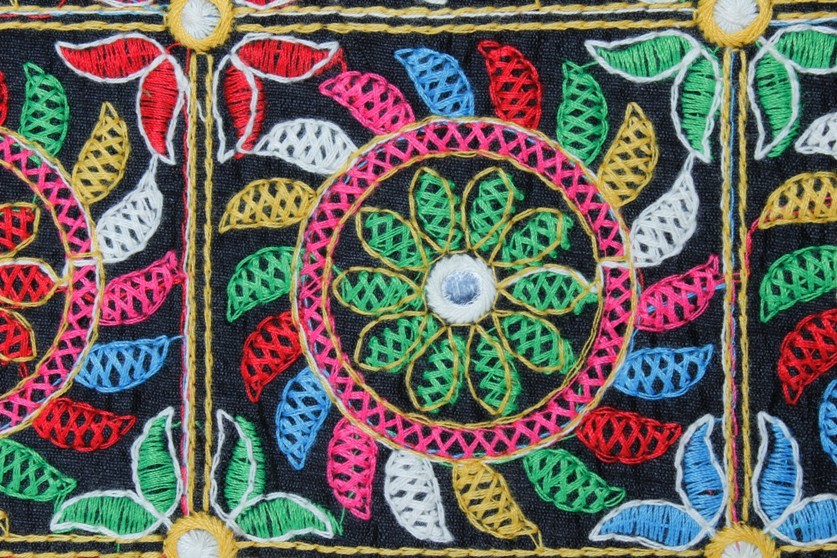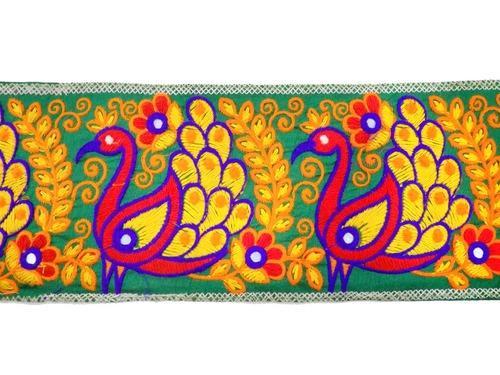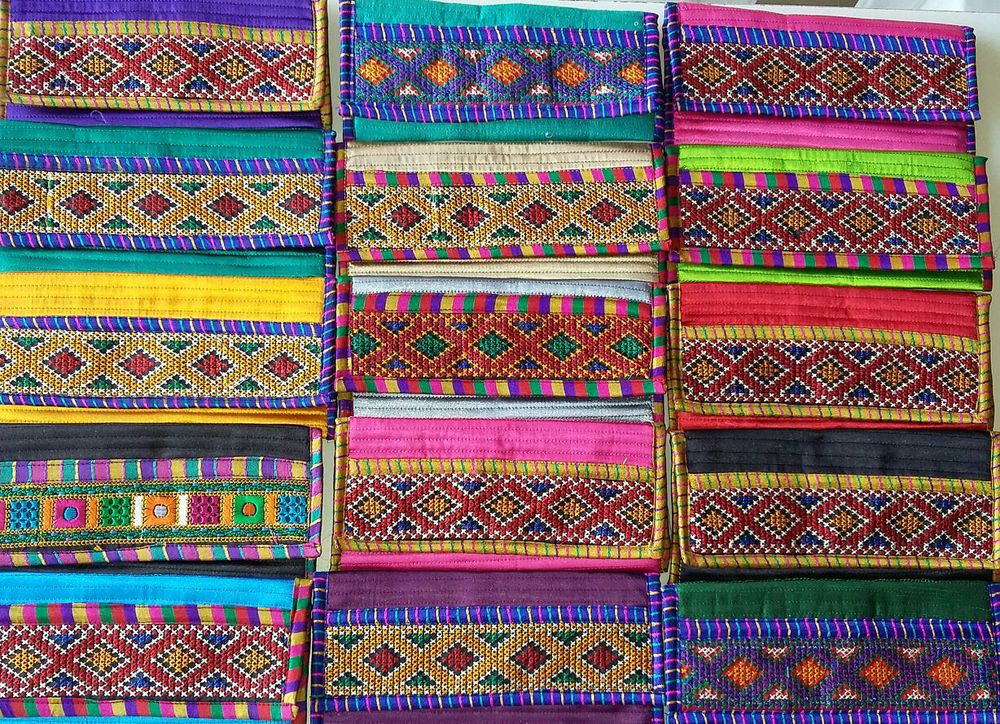Kutch Embroidery and Patch Work
The Kutch Embroidery, one of the many things the state of Gujarat is famous for, is rich for designs and small patches of mirrors. It has made its mark in the Indian fashion industry. Kutch embroidered handbags, kurtas, scarves and other articles are of huge demand in the country.
The embroidery is mainly practiced by women in the district of Kutch (that’s where the name ‘Kutch Embroidery’ was coined) It was first done on cotton fabrics, with silk or cotton threads in a net-like fashion. In certain parts of Gujarat, the embroidery is also done on silk and satin fabrics.

There are different types of stitches adopted to complete an intricate Kutch embroidered article. Few among the long-range of stitches are;
- a) Square Chain
- b) Double Buttonhole
- c) Pattern Darning
- d) Running Stitch
- e) Satin Stitches
- f) Straight Stitches
A Kutch Embroidery can never be complete without abhlas or small patches of mirrors embedded into the cloth. They are an inherent part of the embroidery. It makes the fabric glisten and shine. Mirrors are interpreted in various ways in different parts of the state, like water, warding off of evil eye, etc.
Different types of embroidered designs are made based on the different tribal groups based in Gujarat. Each tribal groups have their own unique designs. Few out of the many include;
- a) Suf
- b) Khareek
- c) Paako
- d) Rabaari
- e) Garasi Jat
- f) Mutava
Kutch Embroidery can be traced back to the early 16th and 17th centuries from Afghanistan, Germany and Greece, Iraq and Gujarat. History also claims that moochis were trained to do embroideries as such by Sindh Sufis.
This art form was later taken up by women initially to pass time and later, proved them profitable. It later became a generational art passed on from mothers to heiress. Kutch embroidered outfits are now worn to functions and celebrations by the female demographic of Gujarat.




